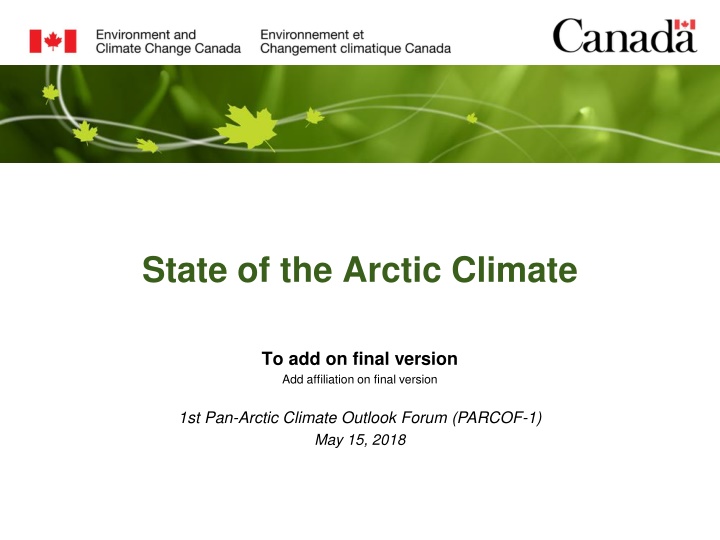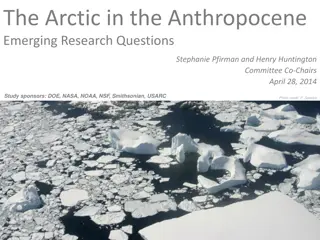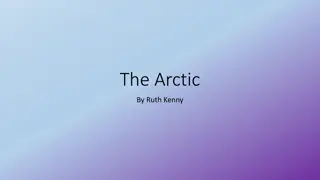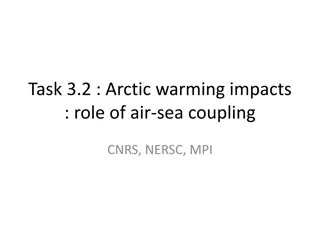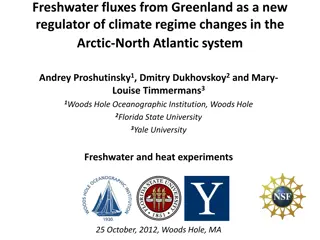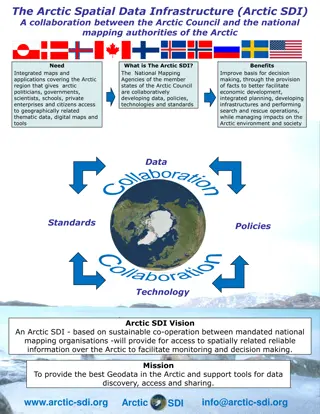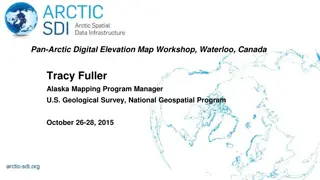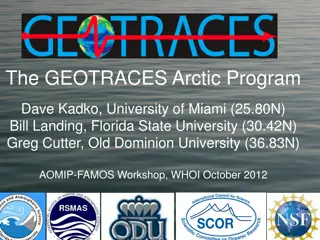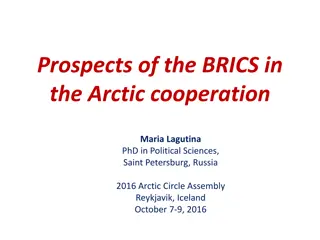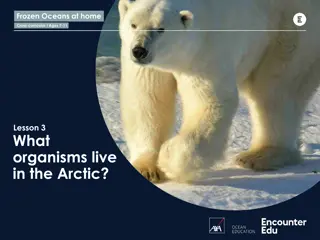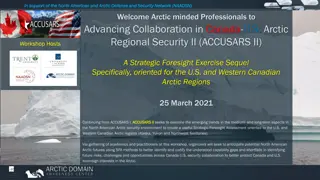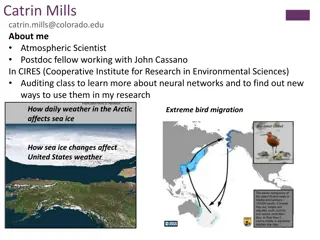Insight into the State of the Arctic Climate and Trends
The Arctic climate is rapidly changing, showcasing warmer temperatures and shifting precipitation patterns. The region plays a crucial role in various sectors like shipping, tourism, and economic development, with significant implications for global climate adaptation efforts. Detailed analyses of temperature trends, winter conditions, precipitation patterns, and sea ice extent provide valuable insights into the dynamic nature of the Arctic environment.
Download Presentation

Please find below an Image/Link to download the presentation.
The content on the website is provided AS IS for your information and personal use only. It may not be sold, licensed, or shared on other websites without obtaining consent from the author.If you encounter any issues during the download, it is possible that the publisher has removed the file from their server.
You are allowed to download the files provided on this website for personal or commercial use, subject to the condition that they are used lawfully. All files are the property of their respective owners.
The content on the website is provided AS IS for your information and personal use only. It may not be sold, licensed, or shared on other websites without obtaining consent from the author.
E N D
Presentation Transcript
State of the Arctic Climate To add on final version Add affiliation on final version 1st Pan-Arctic Climate Outlook Forum (PARCOF-1) May 15, 2018
The Arctic matters Shipping Transportation Tourism Hunting Economic development Resilient communities Climate adaptation Page 2 October 6, 2024
Climate classification of the Arctic Page 3 October 6, 2024
Arctic surface air temperature trends The Arctic is currently warming at more than twice the rate of global mean temperatures. Larger positive temperature trends north of 60 N compared to other latitudes. Page 5 October 6, 2024
Winter 2017-2018: Warmer than normal conditions October 2017 March 2018 925 mb air temperature anomaly ( C) compared to 1981-2010 climatology Highlights: Above freezing temperatures at the North Pole in February 2018, while Europe experienced below normal conditions. Page 6 October 6, 2024 NCEP/NCAR Reanalysis
Precipitation in the Arctic 1981-2010 annual precipitation (mm/day) climatology Annual precipitation ranges between 0.28 mm/day to 6.32 mm/day Precipitation in the Arctic is typically: High over oceans High in mountainous area Low inland Low over sea ice GCPC combined precipitation dataset Low density of observation in the Arctic is especially challenging for monitoring of precipitation. Page 7 October 6, 2024
Winter 2017-2018: Dry and wet conditions December 2017 February 2018 Precipitation anomaly (mm/day) compared to 1999-2010 climatology Notable event: A total of 25 cm of snow in 24 hours in Whitehorse, Canada contributed for February 2018 to be wettest on record at that location since 1943. Dry Wet Page 8 October 6, 2024
Arctic sea ice extent Decreasing minimum (Sept.) and maximum (March) sea ice extent relative to the mean values for the period 1981-2010. Source: Perovich et al. (2017) [in Arctic Report Card 2017], https://www.arctic.noaa.gov/Report-Card The age of sea ice has been decreasing between 1985 (left) and 2017 (right). Younger ice is thinner than older ice, and more vulnerable to melt in the summer. Page 9 October 6, 2024
Winter 2017-2018: 2018 winter maximum was second smallest on record Vast stretches of open water near Gambell, Alaska Highlights: Smallest sea ice extent in January and February since 1979. Persistently low sea ice extent in the Bering Strait. Photo by Clarence Irrigoo Jr., February 8, 2018. Image by Joshua Stevens, NASA Earth Observatory. Data from the National Snow and Ice Data Centre. Page 10 October 6, 2024
Part 1 impact on indigenous communities social aspects and impacts of climate change on indigenous communities Page 11 October 6, 2024
Part 2 if needed social aspects and impacts of climate change on indigenous communities Page 12 October 6, 2024
Concluding remarks Large variability of climate regimes in the Arctic Observational records of temperature, precipitation (amounts and type), and sea ice are common indicators of changes in the Arctic. Interconnectivity between the different components of the Arctic climate system With increased interest in the Arctic, it is important develop regionally-focused climate monitoring and prediction tools. Page 13 October 6, 2024
